Logic Apps in Azure is a leading integration platform as a service (iPaaS) where users can deploy and run Logic Apps anywhere to increase scalability and portability while automating business-critical workflows anywhere.
What are Azure Logic Apps?

Azure Logic Apps is used for creating and running automated workflows that integrate apps, data, services, and systems in a cloud-based platform
The following list gives a few example tasks, that can be automated using the Logic Apps service:
- We can set a Scheduler to send email notifications using Office 365 when some event occurs, for example, a new file is uploaded.
- We can monitor tweets, analyze the sentiment and create tasks/alerts for those tweets that need review
Logic Apps Price
The price of the logic apps is based on the continent. It is different in different regions. Let’s see the Standard Plan prices per hour in India and U.S
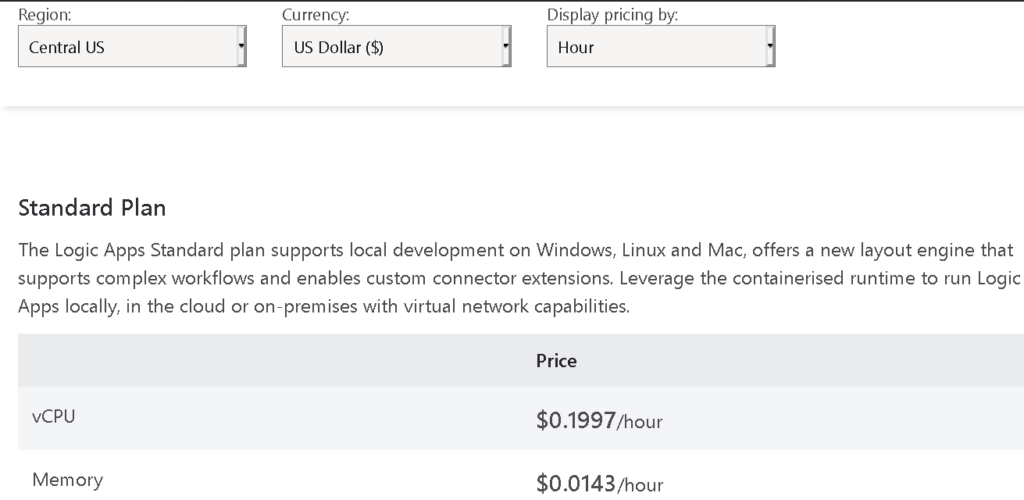
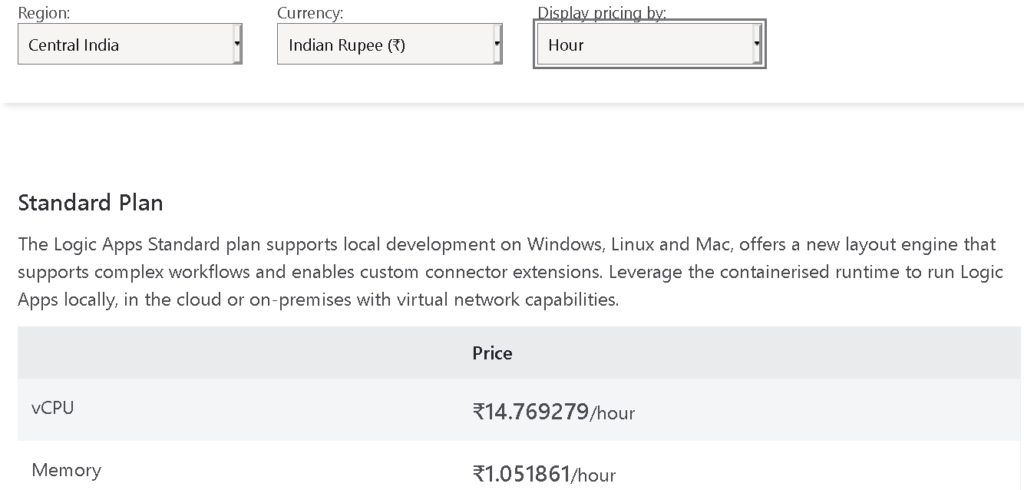
If you are from a different country then you can go and check the price at Azure’s website by applying filters to customize pricing options to your needs. The website will also give you the options to look after other plans prices too according to your requirement.
Logic Apps Parameters

Logic Apps In Azure lets you abstract values for changing the workflows across your development, test, and production environments by defining parameters.
What is the use of pamameters in Azure Logic Apps.
For focussing more on designing the workflows rather than inserting the environment-specific variables, parameters can be used, as after you are done with designing the workflows you can insert the environment-specific variables later on.
For more detailed information you can check here.
Parameters in single-tenant versus multi-tenant
In Azure logic apps, the parameters work with two types of resources, they are as follows:-
- The Consumption resource type:- This resource type runs in the multi-tenant Azure Logic Apps or integration service environment
- Standard resource type:- This resource type runs in a single-tenant Azure Logic Apps environment.
For more detailed information you can check here.
Logic Apps Triggers

The first step in any workflow is always started by an event called trigger which specifies the condition regarding running any further steps in that workflow. For example, a trigger event can be getting an email in your inbox or detecting a new file in a storage account.
Types of Trigger
There are 2 types of triggers (which are provided by some connectors for firing up events or new data when the specified conditions are met. ) available where sometimes the trigger is available in both versions.
- Polling triggers: Polling triggers are the triggers that check a service’s endpoint regularly on a specified schedule to check the presence of new data or a specific event.
If there is a presence of new data or if any specific event happens then the trigger creates and runs a new workflow instance with the data as input.
- Push triggers: Push Triggers are the triggers that listen for new data or for an event to happen at a service endpoint and waits till any specific event occurs. As soon as the new data is available, or any particular event occurs, the trigger fires immediately by creating and running a new instance of the workflow where this new instance uses any available data as input
Azure Logic Apps vs Azure Functions

Azure Functions and Logic Apps are both Azure services that enable serverless workloads. Let us see the differences between them so that you can choose the correct one according to your requirement.
| Azure Logic Apps | Azure Functions | |
| Summary | Azure Logic Apps provides serverless workflows. They are workflow triggered by an event that is used for automating business processes. | Serverless compute service that can be built in various languages like C#, Python, Java, Powershell, etc. |
| Development | Designer-first (declarative) | Code-first (imperative) |
| Connectivity | Logic Apps have connectors | Do not support connectors |
| orchestrations | Logic Apps create orchestrations by using a GUI or editing configuration files. | Used for developing orchestrations by writing code and using the Durable Functions extension. |
| Management | Azure portal, REST API, PowerShell, Visual Studio | REST API, Visual Studio |
| Execution context | Logic Apps run only in the cloud | Azure Functions can be developed and debugged on the local workstation |
The Logic App Designer

The Logic App Designer in the Azure Portal is the same designer that is available through the Azure Logic App Tools for Visual Studio which is written in TypeScript/React, hence, a developer will have the same experience in Logic App Designer(in the Azure Portal) as they had within Visual Studio.
The Logic App designer uses OpenAPI Swagger for rendering the inputs and outputs. Swagger is also used for understanding how to generate the cards as well as the properties for each of those APIs of operations that a developer has.
The Visual Designer is written in TypeScript/React and hosted in an iFrame in the portal. Furthermore, the designer in the Azure Portal is the same designer that is available through the Azure Logic App Tools for Visual Studio. Hence, it’s an iFrame in Visual Studio as well, hosting the same designer – a developer will have the same experience in the portal as within Visual Studio.
For more information, you can check here
Logic Apps Use Cases
Let us know about some of the use cases that Azure Logic Apps support. The use cases are as follows:-
- IoT backend
- SaaS-based application activity
- Backend for web & mobile applications
- Orchestration for API Apps
- Data Validation
- Data Transformation Services
How To Create Logic Apps In Azure
So as we have got a brief idea about logic apps, let’s understand the steps to create our first logic apps in azure but before starting with it make sure you are already meet the following prerequisites:-
- Make sure you have the Azure subscription, or just sign up for a free Azure account before you begin. (As I am a Microsoft student ambassador 2021, I will use that email provided by Microsoft to me for creating my first logic app)
- An email account from a service that works with Azure Logic Apps, such as Office 365 Outlook or Outlook.com.
Steps to Create Logic App
Step 1: Sign in with your Azure account to the online Microsoft Azure portal.
Step 2: Click on Logic apps or search for Logic apps on the search bar
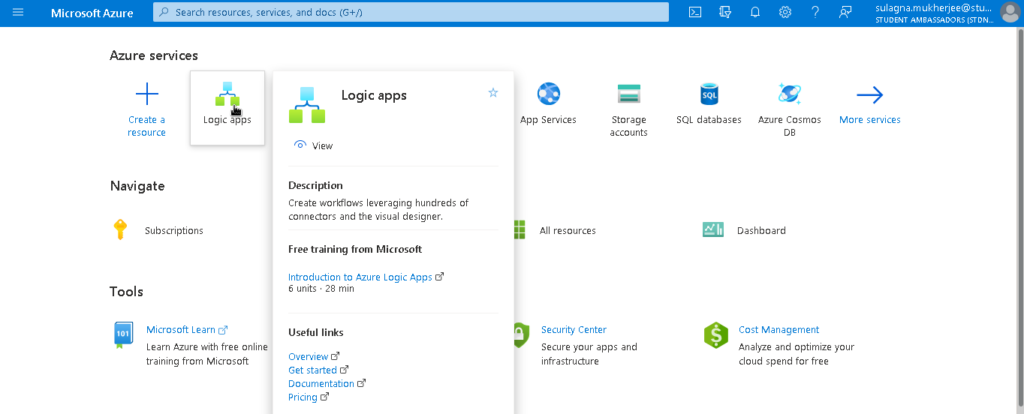
Step 3: When you will be taken to the Logic Apps page, select Add.
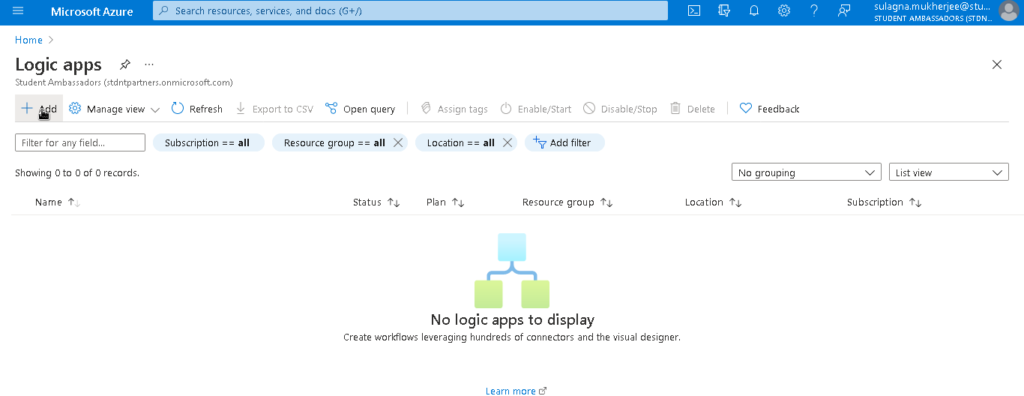
Step 4: You will be taken to the Logic App pane where you have to give the following basic details for your logic app.
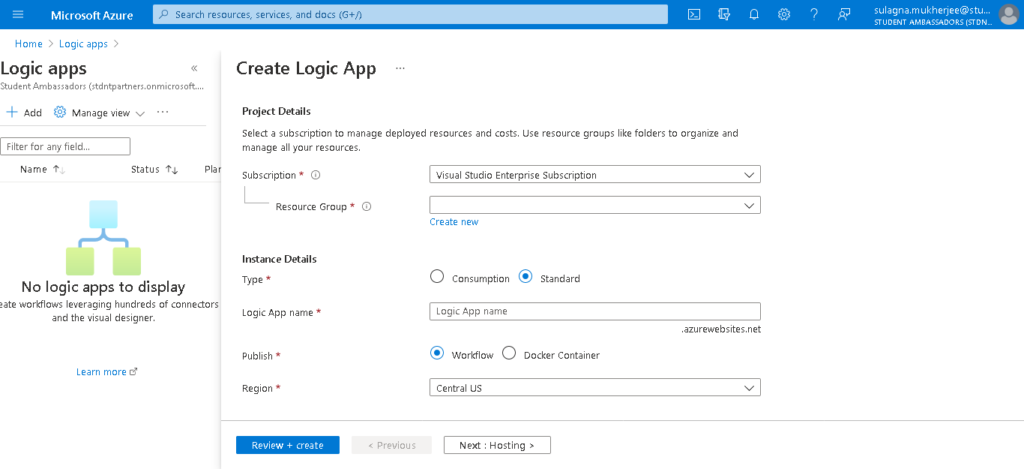
Microsoft has provided a guide on their website regarding every field you have to fill.
Step 5: Next, you have to create a resource group, in case you don’t have an existing one, and after that select that group as a resource group.


Step 6: Keep the type option as standard but if you want to create a logic app resource that runs in the multi-tenant Logic Apps service environment then you can select the Consumption option
Now next, give a name to your app by following the name rules that I provided above and provide the region you want to provide or keep it by default, and then you are done after clicking on Review + Create
Step 7: Wait till it is validated and then click on Create.
You will see that the creation of logic apps is in process, as we have created the resources also during the creation of logic apps so it will take some time to complete.
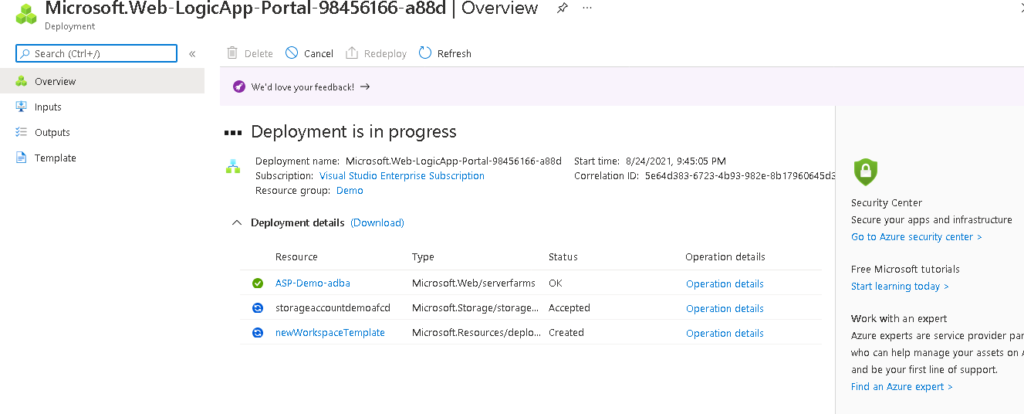
Next, when the process is completed click on Go To resources
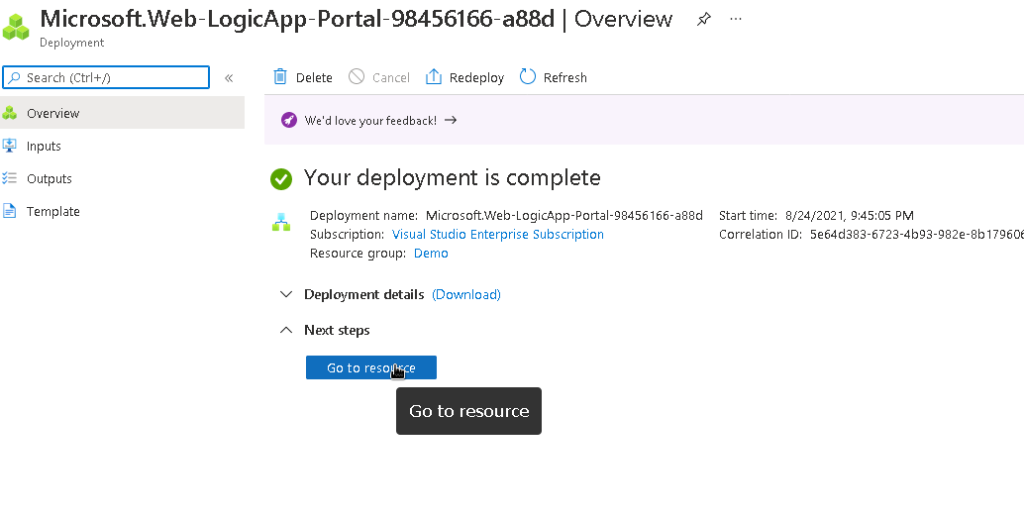
Now you can see that the logic app has been created
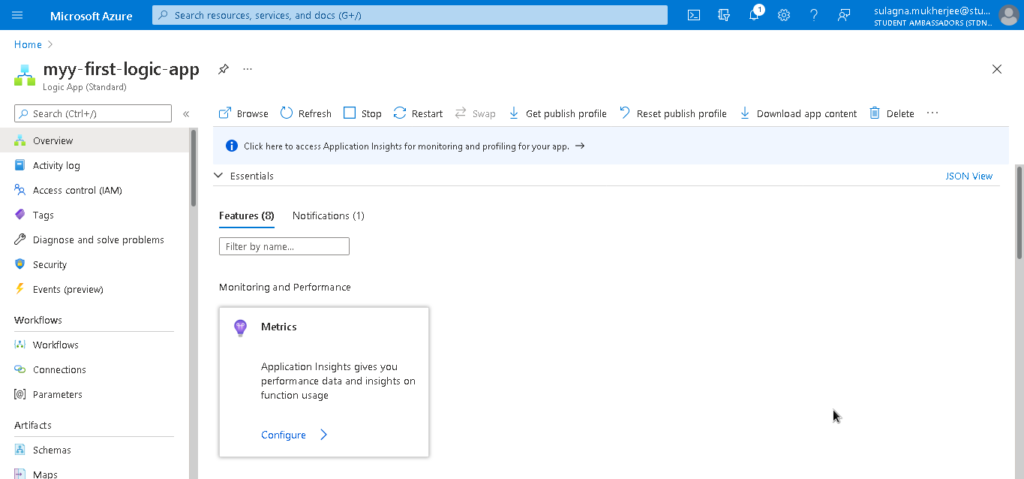
Step 8: Next, on the left-hand side select the events option and choose Logic apps so that you can automate the event you want to.
Next, click continue
Step 9: Select the All option and then select the trigger option at the bottom and choose the options that are suitable for your requirement or you can search it too.
This is how you can create your logic apps where you can automate things according to your requirement.
Using Parameter
We have already discussed parameters earlier in this article, now let’s see how to use them:-
In the Azure portal go to the Parameters tab from your logic apps under the Logic App Designer.
After clicking on the tab, the following panel will appear on the right side of the Designer:
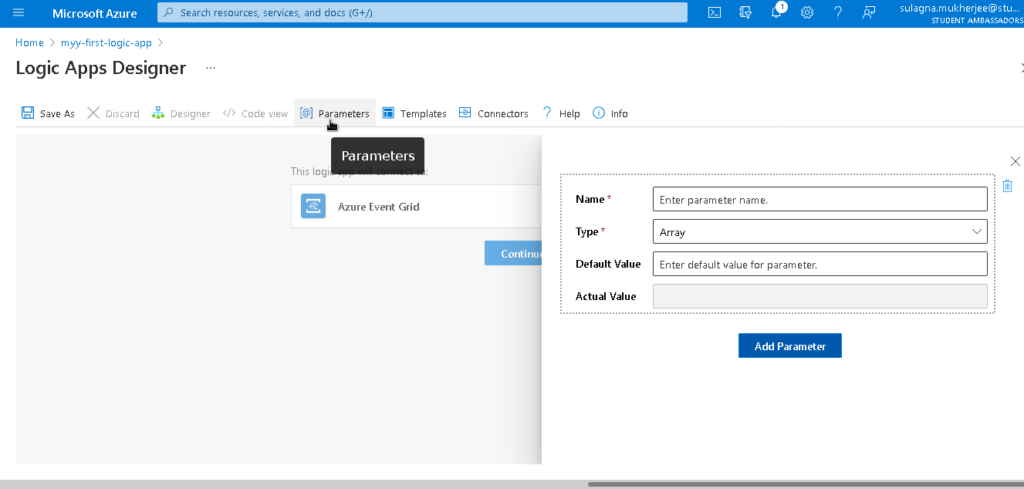
The meanings are given in the Microsoft documentation

The available parameters are:
- Array
- Boolean
- Float
- Int
- Object
- Secure Object
- Secure String
- String
Conclusion
Logic Apps in Azure are a great choice for any business or any tasks that anyone wants to perform as in Logic Apps automation is done in a very user-friendly way and the programming part is kept very minimal as compared to the Azure function so people with a non-technical background can also be very comfortable with automating their task. This technology is the future technology that everyone should adapt to.

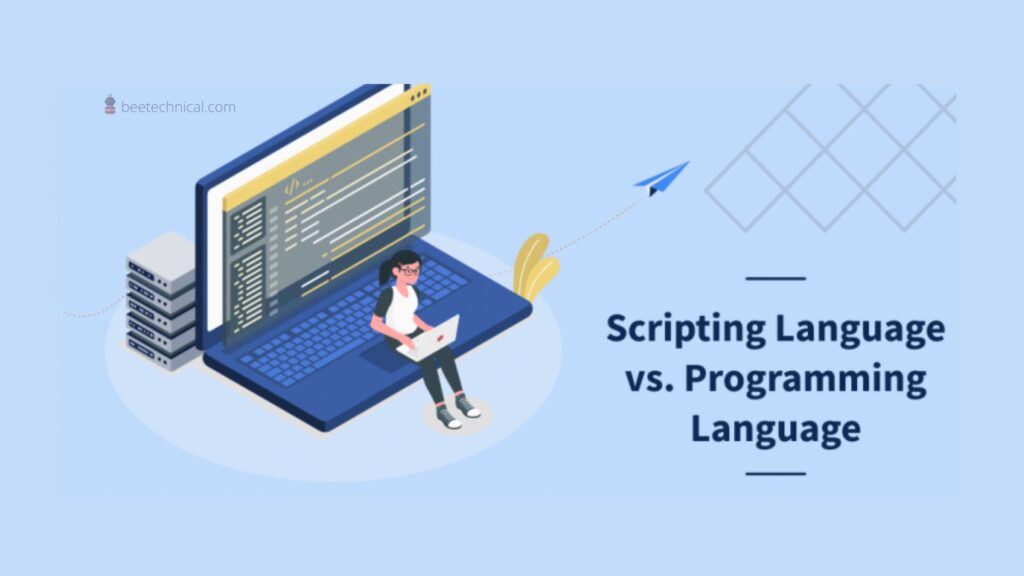
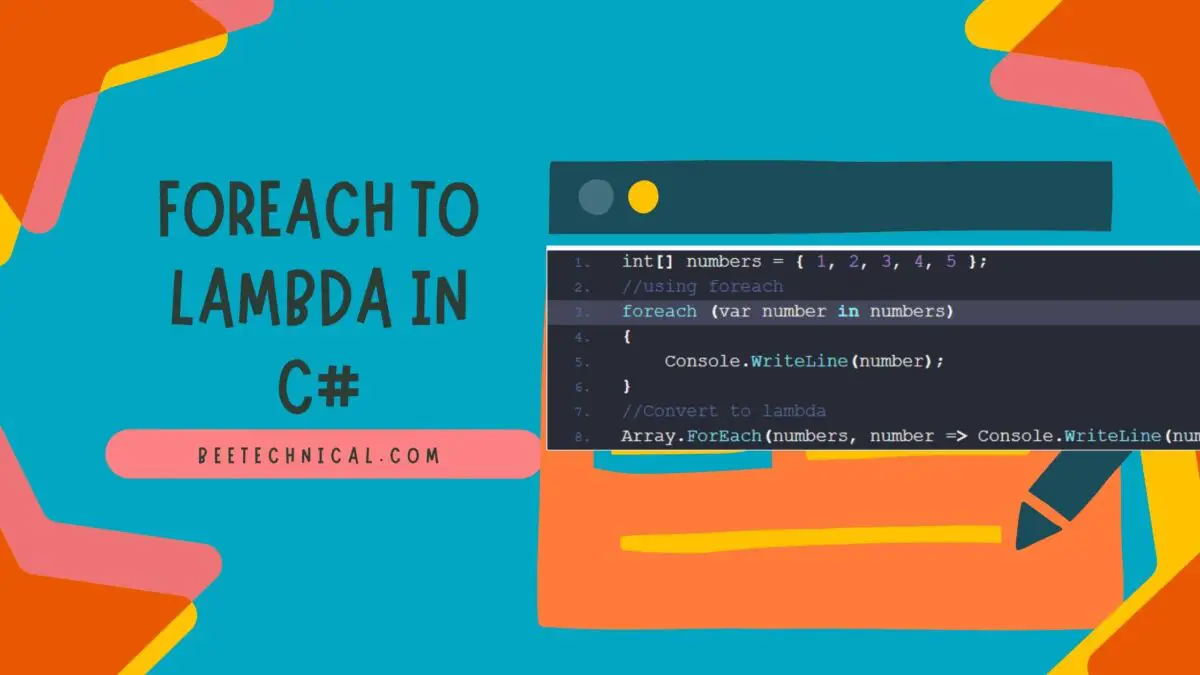

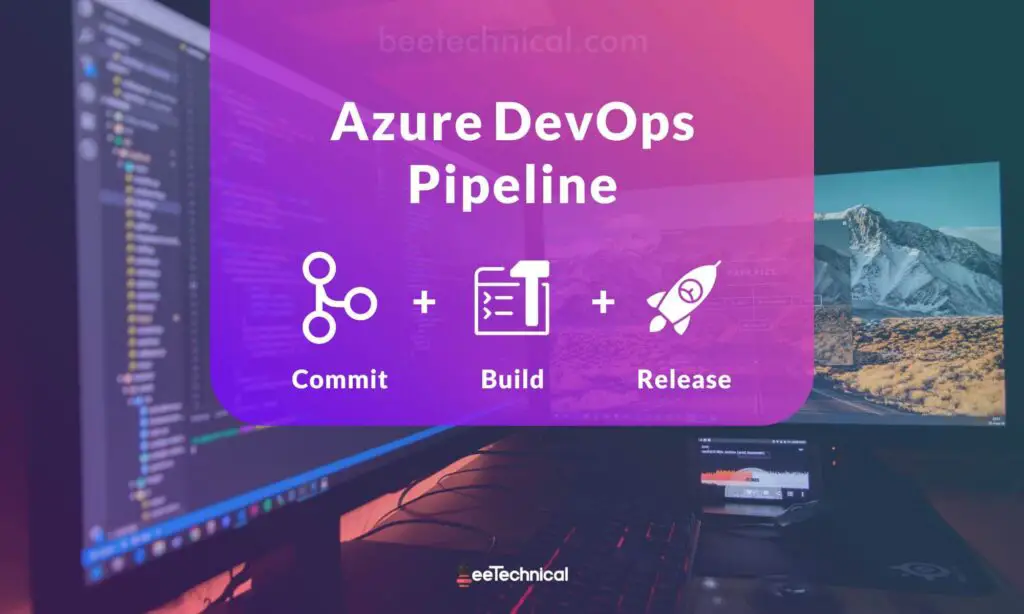
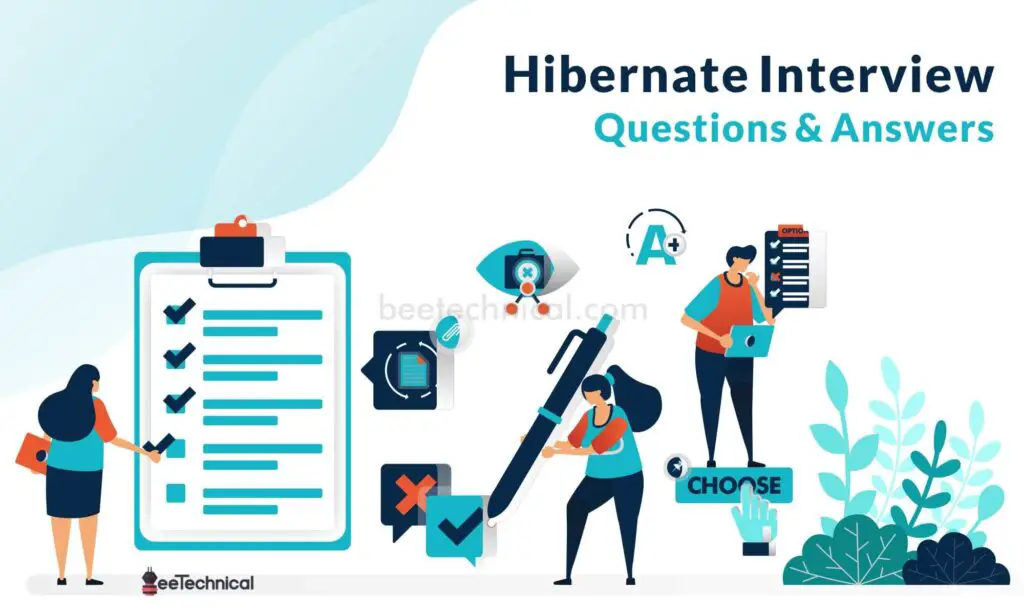


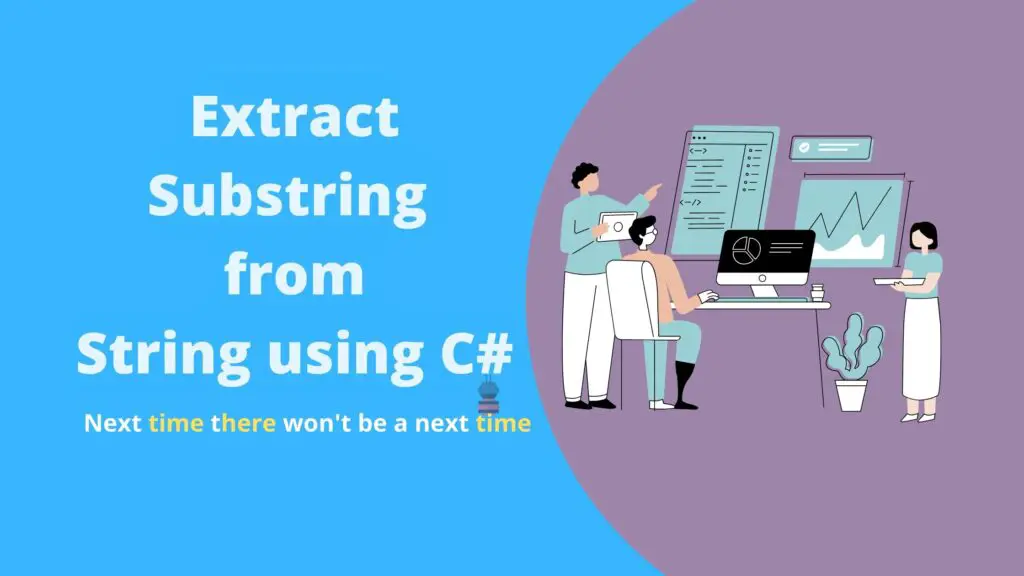
Comments are closed.